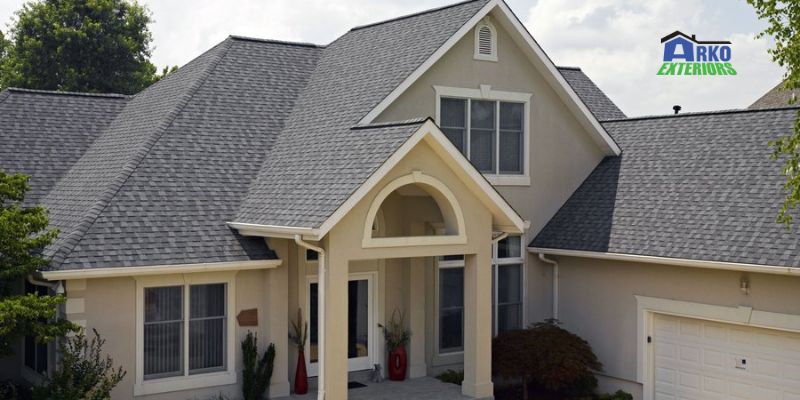The roofing industry is constantly evolving, driven by advancements in technology and a growing demand for sustainable and efficient solutions. Modern homeowners and businesses alike are seeking roofing systems that not only provide superior protection and durability but also contribute to energy efficiency and environmental sustainability. From innovative materials to smart technologies, the latest roofing innovations are transforming the way we think about building protection and performance.
In this blog, we will delve into the most recent roofing technologies and innovations that are making waves in the industry. Whether you’re a roofing professional looking to stay ahead of the curve or a property owner interested in the latest options for your roof, this comprehensive overview will highlight key trends and developments that are shaping the future of roofing. Join us as we explore cutting-edge materials, smart roofing systems, and eco-friendly solutions that are setting new standards in the roofing world.
The roofing industry has seen remarkable advancements in recent years, driven by the need for more durable, energy-efficient, and sustainable solutions. Whether you are a homeowner, a business owner, or a roofing contractor, staying updated with these innovations can help you make informed decisions and leverage the latest technologies for better performance and value. Here, we explore some of the most impactful roofing technologies and innovations currently shaping the industry.
1. Cool Roofs
- Reflective Materials: Cool roofs are designed with reflective materials that reflect more sunlight and absorb less heat compared to traditional roofs. This helps in reducing cooling costs and improving indoor comfort.
- Energy Efficiency: By lowering roof temperatures, cool roofs decrease the need for air conditioning, which can lead to significant energy savings.
- Urban Heat Island Mitigation: Cool roofs contribute to reducing the urban heat island effect, where urban areas become significantly warmer than their rural surroundings.
2. Green Roofs
- Environmental Benefits: Green roofs, covered with vegetation, provide numerous environmental benefits, including improved air quality, stormwater management, and reduced urban heat islands.
- Thermal Insulation: The vegetation and soil layers provide additional insulation, helping to keep buildings cooler in the summer and warmer in the winter.
- Biodiversity: Green roofs create habitats for various species, promoting urban biodiversity.
3. Solar Roofing
- Photovoltaic (PV) Panels: Solar roofing systems integrate photovoltaic panels that convert sunlight into electricity, offering a sustainable and cost-effective energy solution.
- Solar Shingles: Solar shingles blend seamlessly with traditional roofing materials while generating renewable energy, providing an aesthetic and functional advantage.
- Energy Independence: Solar roofing systems can significantly reduce reliance on grid electricity, leading to long-term savings and energy independence.
4. Synthetic Roofing Materials
- Durability and Longevity: Synthetic roofing materials, such as synthetic slate and shakes, offer the look of natural materials with enhanced durability and lower maintenance.
- Lightweight: These materials are typically lighter than their natural counterparts, reducing the structural load on buildings.
- Recyclability: Many synthetic roofing products are made from recycled materials and can be recycled at the end of their lifespan, contributing to sustainability.
5. Smart Roofing Technologies
- Sensors and Monitoring: Smart roofing systems incorporate sensors that monitor roof conditions in real-time, detecting leaks, moisture buildup, and structural integrity issues.
- Predictive Maintenance: These systems can provide alerts for potential problems before they become significant, allowing for proactive maintenance and reducing repair costs.
- Energy Management: Smart roofs can integrate with home automation systems to optimize energy use and improve overall efficiency.
6. Advanced Insulation Technologies
- Spray Foam Insulation: This highly effective insulation method creates a seamless barrier that reduces air leakage and improves energy efficiency.
- Reflective Insulation: Utilizes reflective surfaces to reduce radiant heat transfer, enhancing thermal performance.
- Vacuum Insulation Panels (VIPs): Offering superior thermal insulation properties, VIPs are extremely thin yet highly effective, making them ideal for space-constrained applications.
7. Impact-Resistant Roofing
- Enhanced Durability: Impact-resistant roofing materials, such as certain types of asphalt shingles and metal roofing, are designed to withstand severe weather conditions, including hail and high winds.
- Insurance Benefits: Many insurance companies offer discounts for homes with impact-resistant roofs, reflecting the reduced risk of damage.
- Longevity: These materials often have longer lifespans and lower maintenance needs, providing long-term value.
8. Recycled and Sustainable Materials
- Reclaimed Wood Shingles: Made from reclaimed wood, these shingles offer a rustic aesthetic while promoting sustainable practices.
- Recycled Metal Roofing: Metal roofing made from recycled materials is not only durable and energy-efficient but also environmentally friendly.
- Composite Roofing: Comprising recycled plastics and other materials, composite roofing provides a sustainable alternative to traditional options.
9. Self-Healing Roofing Materials
- Innovative Polymers: Self-healing roofing materials incorporate polymers that can repair minor cracks and damages automatically, extending the roof’s lifespan.
- Reduced Maintenance: These materials reduce the need for frequent repairs, lowering overall maintenance costs.
- Enhanced Durability: By maintaining their integrity over time, self-healing roofs offer enhanced protection and durability.
10. Fire-Resistant Roofing
- Safety Benefits: Fire-resistant roofing materials, such as metal and certain types of tiles, provide an added layer of safety, particularly in wildfire-prone areas.
- Building Code Compliance: Many regions require fire-resistant roofing materials to comply with local building codes and safety regulations.
- Insurance Incentives: Homes with fire-resistant roofs may benefit from lower insurance premiums due to the reduced risk of fire damage.
Conclusion
The roofing industry is rapidly evolving, with technological advancements and innovative materials driving significant improvements in performance, sustainability, and efficiency. By embracing these latest roofing technologies, contractors can offer superior solutions that meet the modern demands of durability, energy efficiency, and environmental responsibility. Homeowners and businesses alike can benefit from these advancements, ensuring long-lasting, high-quality roofing systems that enhance both property value and quality of life. Stay informed and explore these innovations to make the best choices for your roofing needs.

